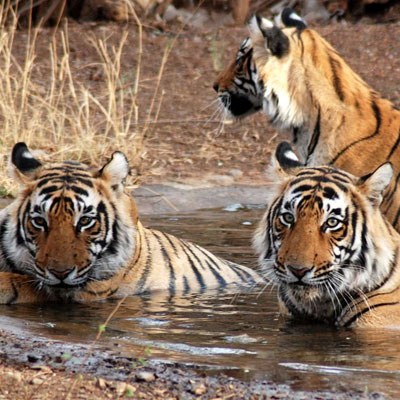Photography during a jeep safari in Jim Corbett National Park is allowed, but there are some guidelines and restrictions to ensure the safety of wildlife and a responsible safari experience:
- No Flash Photography: The use of flash photography is prohibited as it can startle and disturb wildlife, especially during night safaris. Flash can also temporarily blind animals, potentially putting them and you at risk.
- Respect Distances: Maintain a safe and respectful distance from wildlife. Do not approach animals to get a better photograph. Use telephoto lenses to capture close-up shots without disturbing the animals.
- No Selfies: Avoid taking selfies with wildlife or attempting to get too close for a selfie. This can be dangerous and is against park rules.
- Listen to Your Guide: Your safari guide will provide instructions and guidelines for photography. Follow their advice, as they are experienced in wildlife behavior and photography.
- Silent Mode: Keep your camera in silent mode to minimize noise that could disturb wildlife or other safari participants.
- Avoid Disturbances: Do not make loud noises or sudden movements when taking photos. This can startle animals and disrupt their natural behavior.
- Respect Animal Behavior: If an animal displays signs of stress, fear, or aggression due to your presence, back away and do not provoke or stress the animal further.
- No Feeding: Never attempt to feed wildlife for the sake of a photograph. Feeding wildlife can disrupt their natural behavior and endanger their health.
- Be Patient: Wildlife photography often requires patience. Instead of pursuing the perfect shot, focus on observing and appreciating the animals’ natural behavior.
- Respect Park Rules: Familiarize yourself with park rules and regulations related to photography and wildlife encounters. Violating these rules can lead to fines and penalties.
- Litter-Free Photography: Do not leave any litter or waste behind, including camera equipment or packaging. Keep the park clean and pristine.
- Ethical Editing: If you choose to edit your wildlife photographs, do so ethically. Avoid altering the image in a way that misrepresents the animal’s natural appearance or behavior.
It’s important to remember that the primary goal of a wildlife safari is to observe and appreciate animals in their natural habitat while minimizing human impact. Follow these guidelines to ensure responsible and respectful wildlife photography, and prioritize the well-being of both the animals and the park’s ecosystem.

